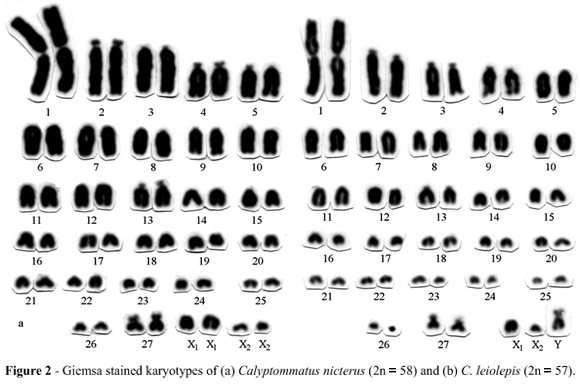Cytogenetic studies were performed on five closely related microteiid lizards (Gymnophthalmini), three Calyptommatus species and Psilophthalmus paeminosus from the sand dunes of the middle São Francisco river in the semiarid caatinga of the Brazilian state of Bahia and Tretioscincus oriximinensis from the Brazilian Amazon region. The diploid chromosome number in Calyptommatus species was 2n = 58 in females and 2n = 57 in males due to a multiple X1X1X2X2:X1X2Y sex chromosomes system, while P. paeminosus was 2n = 44 (20M+24m): where M = macrochromosomes and m = microchromosomes) and T. oriximinensis 2n = 42 (18M+24m). A single pair of silver staining nucleolar organizing regions (Ag-NORs) characterizes all five species. Incorporation of 5-BrdU (Bromodeoxyuridine) followed by replication R-banding (RBG) karyotyping allowed the identification of the larger pairs of chromosomes through longitudinal bands and the late replicating regions. Our data reinforce the remarkable chromosomal variability that has been found in the Gymnophthalmidae and the importance of using differential staining for comparative cytogenetics within this group of lizards. Chromosomal evolution in Gymnophthalmini seems to have included chromosomal fission and fusion, pericentric inversions and variation in the amount and localization of constitutive heterochromatin and the Ag-NOR pattern. Different mechanisms of sex determination also evolved independently in this radiation.
Gymnophthalmidae; banding patterns; karyotypes; multiple sex chromosomes













